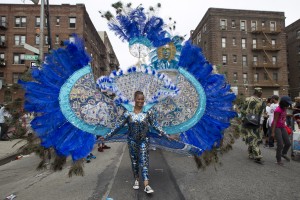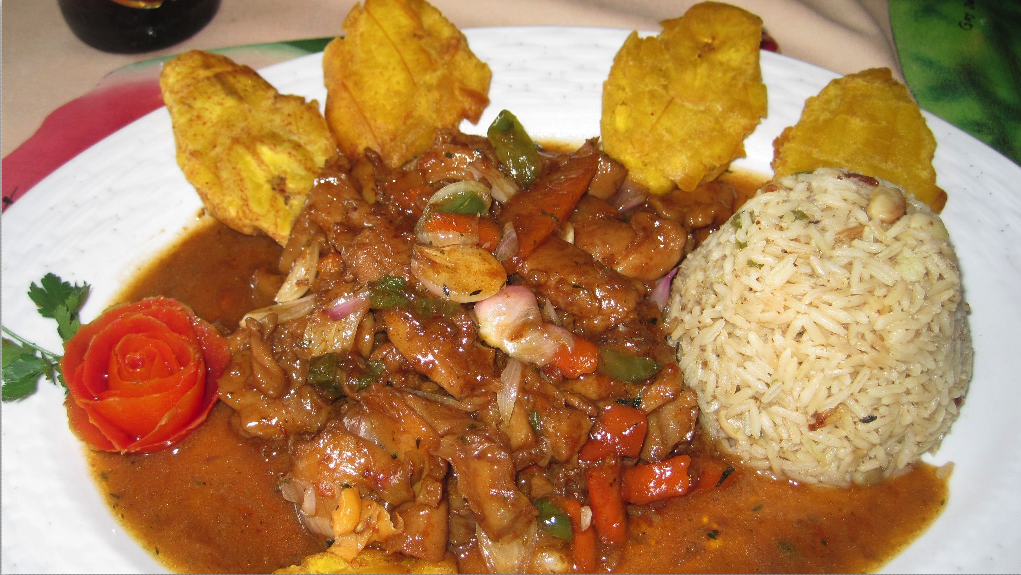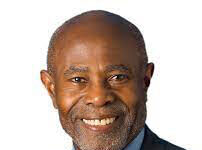
News Americas, NEW YORK, NY, Tues. June 30, 2015: Did you know third wave of Caribbean immigration to the U.S. was generated by the larger changes in American policy that resulted from the Civil Rights movement in 1960s? The HartCeller Immigration and Nationality Act of 1965 abolished national origins quotas and the explicit racial bias that had long prevailed in the nation’s earlier immigration policy. The removal of these barriers resulted in an unprecedented rise in the number of “non-white” immigrants coming from the Caribbean, Latin America, Asia, and Africa. This wave expanded in the 1970s and has continued into the current century.
News Americas, NEW YORK, NY, Mon. June 29, 2015: Did you know a much smaller, wave of immigration from the Caribbean occurred with the onset of World War II and throughout the 1940s and 1950s? This new migration was spurred by American labor shortages during World War II along with expanding economic demands in the immediate postwar period. Many immigrants during this period worked as farm laborers in Florida and other southeastern states and in Connecticut and other northeastern states. These later arrivals were also affected by the passage of the McCarran-Walter Immigration and Nationality Act of 1952. Although the McCarran-Walter Act abolished racial restrictions, it still determined the suitability of potential immigrants based on nationality and regional distinctions, with preference given to those from non-Communist countries and from northern and western Europe.
News Americas, NEW YORK, NY, Fri. June 26, 2015: Did you know the Immigration Act of 1924 drastically turned the tide of Caribbean immigration to the United States? Immigration of Caribbean immigrants plummeted from 10,630 in 1924 to only 321 in 1925. Northwestern Europe was favored in this system, while those from the European colonies could only enter under the designated quota allotted to their colonial masters. So those from the British Caribbean entered under the British quota set at 34,007 in 1925. The black population of foreign origin and their American-born offspring grew from 55,000 in 1900 to 178,000 in 1930. Migrants from the islands, together with those of Caribbean origin coming from Central America, made up over 80 percent of the total.
News Americas, NEW YORK, NY, Thurs. June 25, 2015: Did you know the number of black people, especially those from the Caribbean, who migrated to the United States increased dramatically during the first three decades of the twentieth century? It peaked in 1924 at 12,250 per year and fell off during the Depression. The foreign-born black population increased from 20,000 in 1900 to almost 100,000 by 1930. Over 140,000 black immigrants passed through United States ports between 1899 and 1937, despite the restrictive immigration laws enacted in 1917, 1921, and 1924. The wave of blacks entering the United States was focused on the northeastern coast and arrived mainly on the shores of Manhattan. Tens of thousands came through Ellis Island. From the end of the nineteenth century up to 1905, South Florida was the migrants’ primary destination. There was a large wave of migration from the Bahamas and a smaller flow of black cigar-makers from Cuba. New York was the second most popular state for settlement, followed closely by Massachusetts.
News Americas, NEW YORK, NY, Weds. June 24, 2015: Did you know the first significant wave of post-slavery Caribbean immigration occurred during the first three decades of the 20th century, particularly during World War I and throughout the 1920s? Before then, Caribbean migration was primarily internal as migrants sought economic opportunities in other islands and nations throughout the Caribbean basin including in Panama.
News Americas, NEW YORK, NY, Tues. June 23, 2015: Did you know the eruption of the Haitian Revolution in 1791 sent a wave of migration from the Caribbean region to the U.S. from the 1790s until approximately 1810?
Thousands of white, free colored and some enslaved black Haitian refugees relocated to U.S. coastal cities such as Savannah, Charleston, Norfolk, Baltimore, Philadelphia, New York, and especially to New Orleans, where they made their most significant cultural and demographic impact.
News Americas, NEW YORK, NY, Mon. June 22, 2015: Did you know the journey of Afro-Caribbean people to the United States started when enslaved Barbadians were first taken by their British owners to South Carolina during the seventeenth century? This first involuntary migration was followed by a large influx of people from the British West Indies at the turn of the twentieth century. A third wave of immigrants arrived between 1930 and 1965, and the fourth is going on today.
News Americas, NEW YORK, NY, Fri. June 19, 2015: Did you know the impact of Haitian revolutionaries over Napoleon’s army sparked a ban on all free black males trying to enter the state of Louisiana in 1806?
According to white residents at Bayou La Fourche, twelve Haitians from a passing vessel threatened them “with many insulting and menacing expressions” and “spoke of eating human flesh and in general demonstrated great Savageness of character, boasting of what they had seen and done in the horrors of St. Domingo [Haiti].” The slaveholders’ anxieties increased and inspired a new series of statutes to isolate Louisiana from the spread of revolution. A ban on West Indian bondspeople continued and in June 1806 the territorial legislature barred the entry from the French Caribbean of free black males over the age of fourteen. A year later, the prohibition was extended: all free black adult males were excluded, regardless of their nationality. Severe punishments, including enslavement, accompanied the laws.
News Americas, NEW YORK, NY, Thurs. June 18, 2015: Did you know the first Black newspaper in the South, L’Union in New Orleans in 1862, was founded by two brothers of Haitian ancestry?.
Dr. Louis Charles Roudanez and his brother, Jean-Baptiste founded the paper and used it to condemn slavery, the Confederacy, and to express solidarity with Haiti’s revolutionary republicans. They were born to Louis Roudanez, a French creole who migrated to Louisiana from Haiti.
During these early days of journalism, L’Union working along with other groups and institutions, gave voice to and united the desires of Louisiana African Americans. L’Union was founded and circulated as a biweekly and tri-weekly. Louis Charles Roudanez died at the age of 67 in his home in New Orleans on March 11, 1890.
News Americas, NEW YORK, NY, Weds. June 17, 2015: Did you know a hero at the Battle of New Orleans and the first highest ranking black man in the history of the U.S. Army, was a native of Saint-Dominque (Haiti)?
That’s right! Joseph Savary and his family fled and settled in New Orleans after eluding immigration authorities by slipping into the US through Barataria, a coastal settlement just west of the Mississippi River.
By the time of the Civil War, General C.C. Claiborne, the U.S. military commander in Louisiana who was familiar with Savary and other former Haitian soldiers, suggested to Commanding General Andrew Jackson that they be incorporated in the United States Army against the British. Jackson extended the offer to Savary who single-handedly raised a battalion from among the Free Negro emigrants from Santo Domingo. The Second Battalion, Free Men of Color of the Louisiana Militia, some 256 men, including staff officers, were assembled in New Orleans and inducted into the service of the United States on December 19, 1814. On the same day, Savary who had already assumed the rank of Captain was promoted to the rank of second major. With that promotion he became the highest ranking black man in the history of the U.S. Army. Savery and his men fought back the British who were attempting to enter the city during the main Battle of New Orleans on January 8, 1815. At the end of the conflict Jackson publicly praised the Second Battalion and its commander. When the war ended, however, Jackson, at the request of New Orleans’s white residents, ordered all black troops out of the city. Savary and his men took the removal orders as an affront. He and many of them returned to Spanish Texas where they were welcomed by Pierre Lafitte. Savary and his men joined Mexican rebels fighting for their nation’s independence. The date Savary left Texas to return to the United States is unclear. However he was listed as living in New Orleans in 1822.
News Americas, NEW YORK, NY, Tues. June 16, 2015: Did you know Richard Howell Gleaves, a Haitian American was a prominent mason and the Sixth National Grand Master of the Prince Hall National Grand Lodge of North America and Reconstruction-era politician in South Carolina?
He was born free in Philadelphia to a Haitian father and an English mother, and died in Washington, D.C. In 1866, Gleaves moved to Beaufort, South Carolina and went into business with Robert Smalls. Gleaves purchased property in the town, including land on which was later constructed a black fraternal hall that is now known as the Sons of Beaufort Lodge, located at 607 West Street in Beaufort.
In 1872 and 1874, Gleaves was elected the 55th Lieutenant Governor of South Carolina to serve under Governors Franklin J. Moses, Jr. and Daniel H. Chamberlain In 1874, he defeated Martin Delany. He died in 1907.
News Americas, NEW YORK, NY, Mon. June 15, 2015: Did you know James Weldon Johnson (1871-1938) was born in Jacksonville, Florida, of Bahamian parents?Educated at Atlanta and Columbia Universities, Johnson was truly a Renaissance figure. He was an educator, lawyer, lyricist who penned the black anthem “Lift Ev’ry Voice,” editorial writer, university professor, novelist, poet, author, diplomat, and executive secretary of the National Association for the Advancement of Colored People. He is perhaps best remembered for his activism for black civil rights and his contributions, as an artist and a patron, to the cultural movement of the 1920s, the Harlem Renaissance.
News Americas, NEW YORK, NY, Fri. June 12, 2015: Did you know W.E.B. Du Bois (1868-1963), a leading American intellectual, was born in Massachusetts to a French man and a black Bahamian woman?
His grandfather Alexander Du Bois migrated from the Bahamas to the United States and later settled in Haiti, where he married a Haitian woman. They had a son, Alfred, who was W.E.B.’s father. Du Bois studied at Fisk University and at the University of Berlin. In 1895, he became the first African American to receive a Ph.D. in history from Harvard University. In addition to a prolific and distinguished literary career, Du Bois was a co-founder of the Niagara Movement, the National Association for the Advancement of Colored People, The Crisis (the NAACP’s literary organ), and Phylon, a journal on race and cultural issues. In 1961, in opposition to American imperialism, he accepted President Kwame Nkrumah’s invitation to immigrate to Ghana and work on the Encyclopedia Africana. Six months after becoming a Ghanaian citizen, in 1963, Du Bois died at age 95. He is buried in Accra.
News Americas, NEW YORK, NY, Thurs. June 11, 2015: Did you know William Stanley Beaumont Braithwaite, the son of an immigrant from British Guiana, published his first book, Lyrics of Life and Love, in 1913?
The annual collection of poetry for which he is best known, Anthology of Magazine Verse and Yearbook of American Poetry appeared between 1913 and 1939 and also showcased the work of many authors, including Countee Cullen, James Weldon Johnson, Langston Hughes, Robert Frost, and Amy Lowell.
Braithwaite was awarded in 1918, in recognition of his contributions to literature, the National Association for the Advancement of Colored People awarded Braithwaite the organization’s highest honor. After retiring from teaching and moving to Harlem, New York, Braithwaite died in 1962.
News Americas, NEW YORK, NY, Weds. June 10, 2015: Did you know Joseph Sandiford Atwell, a Barbadian, became the first black man after the Civil War to be ordained in the Episcopal Church? Rev. Atwell went on to become Rector at St. Phillips Protestant Episcopal Church on Mulberry Street in New York City when he died of typhoid fever in 1881.
He had attended Codrington College in Barbados, and came to the United States in 1863 to attend the Theological Seminary of the Protestant Episcopal Church in Philadelphia, PA. He graduated in 1866 and next came to Kentucky where he was ordained a deacon by Bishop Smith. Rev. Atwell was a missionary worker in Kentucky and next went to Petersburg, VA, where he was ordained a priest in 1868 and became Rector of the St. Stephen’s Church and was head of a parish school. He then went to Savannah, GA, in 1873 and was Rector of the St. Stephen’s Church. He went to New York in 1875. Rev. Joseph S. Atwell was the husband of Cordelia Jennings Atwell, a mulatto from Pennsylvania, and the father of Joseph, Robert, and Earnest Atwell.
News Americas, NEW YORK, NY, Tues. June 9, 2015: Did you know the famous comedian Bert Williams was born in the Bahamas? Williams was one of the pre-eminent entertainers of the Vaudeville era and one of the most popular comedians for all audiences of his time. He was by far the best-selling black recording artist before 1920.
News Americas, NEW YORK, NY, Mon. June 8, 2015: Did you know Robert Brown Elliott, U.S Congressman and Attorney General of South Carolina; W. E. B. Du Bois; poet, songwriter, and activist James Weldon Johnson and his brother, John Rosamond Johnson; and poet and educator William Stanley Braithwaite were among the most distinguished sons of early Caribbean immigrants?
News Americas, NEW YORK, NY, Fri. June 5, 2015: Did you know that Edward Wilmot Blyden, a major contributor to Black Nationalism, was born in the Virgin Islands? He joined the free black immigrants to the region from the United States and taught for five years in the British West Africa colony of Sierra Leone in the early 20th century. His writings on pan-Africanism were influential. He felt that Zionism was a model for what he called Ethiopianism, and that African Americans could return to Africa and redeem it. Later he supported Islam.
News Americas, NEW YORK, NY, Thurs. June 4, 2015: Distinguished Caribbean migrants populate the annals of nineteenth-century black America. A significant number were skilled craftsmen, scholars, teachers, preachers, and doctors. Jan Earnst Matzeliger, the inventor of a revolutionary shoe-making machine, was among them. He emigrated from Suriname. In 1883, Matzeliger successfully invented what many before him had attempted: an automated shoemaking machine that quickly attached the top of the shoe to the sole. This process is called “lasting”. Matzeliger’s machine could produce more than 10 times what human hands could create in a day. This invention revolutionized the shoemaking industry and made shoes affordable to the average person. In recognition of his accomplishment, he was honored on a postage stamp on September 15, 1991.
News Americas, NEW YORK, NY, Weds. June 3, 2015: Did you know the journey of Afro-Caribbean peoples to the United States started long ago, when enslaved Barbadians were taken by their British owners to South Carolina during the seventeenth century. Indeed, most of the earliest Africans to arrive in what would become the United States were seasoned men, women, and children from the Caribbean. This first involuntary migration was followed by a large influx of people from the British West Indies at the turn of the twentieth century.
News Americas, NEW YORK, NY, Tues. June 2, 2015: Did you know Caribbean immigrants figured prominently among the free people of color in the Northern U.S.? In 1827 John B. Russwurm of Jamaica and his African-American colleague Samuel E. Cornish started Freedom’s Journal, the first black newspaper and as late as 1860, one in five black Bostonian had been born in the Caribbean.
News Americas, NEW YORK, NY, Mon. June 1, 2015: The ratio of Caribbean to African slaves in New York was put at three to one between 1715 and 1730. Of slaves introduced by New Yorkers between 1715 and 1741, the largest number came from Jamaica, followed by Africa, Barbados, and Antigua.









